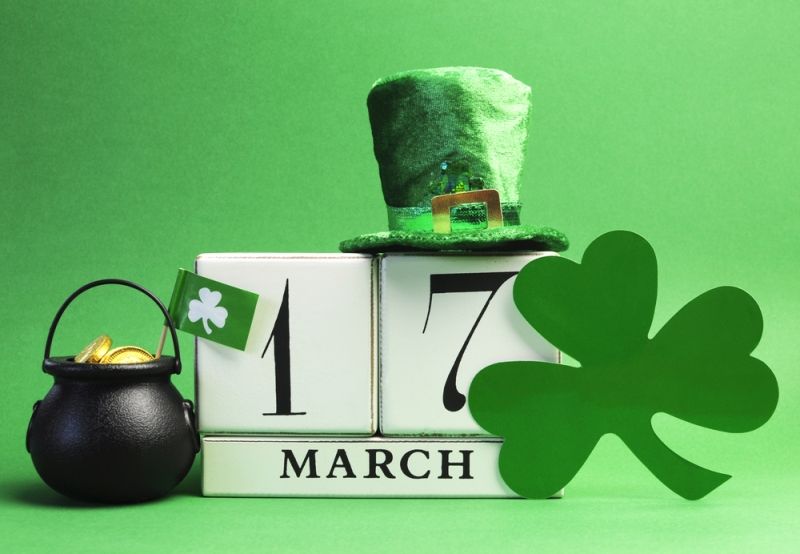The History Behind St. Patrick’s Day
March 25, 2021
Leprechauns, green, the luck of the Irish; St. Patrick’s Day is celebrated on Mar. 17th all around the world with green clothes, Irish food, and plenty of festive celebrations. But how many people actually know who St. Patrick was or why the Irish holiday is celebrated in other countries like America?
St. Patrick’s Day is observed every year on Mar. 17th, the date of St. Patrick’s death. The holiday has been celebrated for over 1,000 years by the Irish and falls in the time of Christian Lent. Irish families traditionally attend church in the morning and party in the afternoon by feasting on traditional Irish food. St. Patrick is the patron Saint of Ireland and is credited with bringing Christianity to the country. St. Patrick’s Day is an enormous deal in Ireland, but it is also celebrated across the globe.
What started as a modest Christian holiday in Ireland has become a day honored in more countries around the world than any other national holiday. It may not be an official public or bank holiday in many countries, but it’s still a day to look forward to in countries such as America, England, Norway, Turkey, and Argentina. The special day showcases Irish culture that is celebrated by people everywhere – Irish or not. What might come as a surprise is America hosts the biggest celebrations of St. Patrick’s day, including the famous tradition of dying the entire Chicago River green! Irish people have been moving across the world for centuries, and at the beginning of Irish immigration to America, they weren’t always accepted.
At the beginning of widespread Irish immigration to the USA, there was actually a lot of discrimination against the newcomers, and it wouldn’t be uncommon to see signs banning Irish citizens from businesses, or job adverts discouraging Irish applications. But despite the adversity, Irish Catholics in the US threw huge parties to show pride in their heritage, and eventually, St. Patrick’s Day became the giant festivals known and loved today. “My ancestors came from Ireland and I used to hear stories about Ireland and leprechauns and St. Patrick,” tells full- Irish Catholic, Lillian Grana who celebrates this holiday in America. “They had such a devotion to St. Patrick that I felt too.”
There are many different ways to celebrate St. Patrick’s day such as wearing green and eating traditional Irish food like Irish bacon, Soda bread, corned beef, and cabbage. People wear green which is due to a few different causes such as the belief that green makes the wearer of it invisible to leprechauns who like to pinch anyone in sight, and the fact that green is the color of Irish rebellion (and shamrocks are the key symbol,) which is one of the colors featured on the flag or Ireland. “I’m always wearing something green – never, never, never, wearing anything orange – and I have corn beef and cabbage,” states Grana when asked about what she does on St. Patrick’s Day.

One trademark of St. Patrick’s Day and Irish culture is the Irish tale of mythical leprechauns: crankly little creatures with a hunger for gold. Leprechauns are told to be almost impossible to catch, and if a human is lucky enough to catch one, they’re granted three wishes in exchange for setting the leprechaun free. The deceitful little shoemakers are known to trick any humans that try to find their pot of gold hidden at the end of the rainbow. On St. Patrick’s day, it’s likely many people dress up as leprechauns in representation of the magical part of Irish folklore.
Perhaps one of the best known legends revolving around St. Patrick and his holiday are shamrocks. Shamrocks are clovers that have three leaves. The green plants are used as a huge symbol of Irish heritage. St. Patrick is said to have used the three leaves of a shamrock to explain three principles of Christianity; The Father, The Son, and The Holy Spirit, to non- Christian inhabitants of Ireland that he wished to convert to Christianity.
St. Patrick’s Day has a large history of everything from religion to magical leprechauns that have become a part of the holiday we know today. Celebrated all around the world, St. Patrick’s Day is a festive way for Irish people to show their heritage with pride and enjoy the many traditions of Ireland and it’s patron Saint, Saint Patrick. Make sure to mark the 17th of March on your calendar and prepare a green ensemble, because myth or not; it’s better to be safe than sorry when it comes to mischievous leprechauns who may pinch you for forgetting to wear green!

